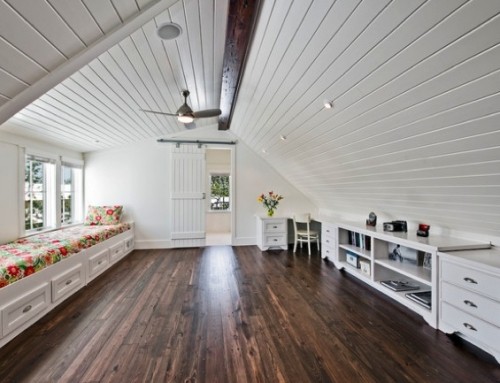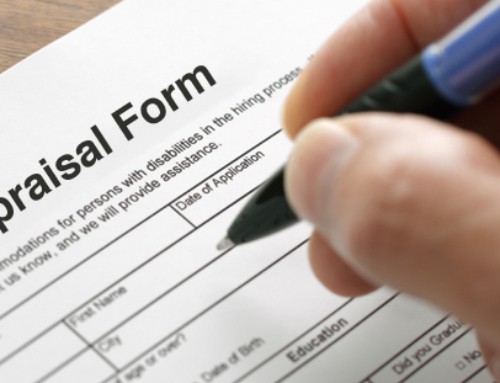A Guide for Funding Your Home Improvement Projects
The average cost to completely renovate a standard kitchen in 2019 is $66,196. Are you remodeling a bathroom? Be prepared to pay $20,420 on average. New asphalt roofing? Look towards spending an average of $22,636.
Upgrading your home is an investment that requires a level of financial security that is becoming less and less common for Americans. When one considers student loan payments, utilities, housing and the costs of childcare, a sizable home improvement project starts to look like an infeasible investment.
Disregarding rare money from an inheritance or a successful go at the lottery, most people simply cannot pay out of pocket. However, there are several options for financing your home improvement projects – some of which you may not even be aware of.
We are home appraisers in New Jersey. Our role in real estate gives us a unique insight into the loan negotiation process. Our service is essential to the securing of funds for all types of loans and the terms of your deal depend on our assessment. Based on our observations, we have compiled the various ways you can remodel, renovate and restore your home and not break the bank while doing so.
1. Consider Refinancing Your Mortgage
There are several reasons this may be your best option – beyond securing the funds for a home improvement project. Your current mortgage may not be ideal for your current financial situation and this means a loss of potential money over time.
Also, this is a good time to refinance –
Rates Are Lower Than Predicted… And Could Go Lower
Just this week, the federal government cut rates for a second time this year, driving low interest rates even lower. This, coupled with the recent yield curve inversion and other federal cuts means that now would be the best time to refinance an unfavorable mortgage.
Let’s put it this way:
According to Tim Lucas of the Mortgage Reports, if you refinanced your mortgage for $300,000 this year
Ask Yourself… Will the Renovation Last Beyond the Mortgage?
Refinancing your mortgage to get money for a renovation only makes sense if the renovations will last throughout the period of repayment. Renovating your kitchen with income from a mortgage that you’ll need to pay off over the next 30 years might not be worth it if your kitchen will be obsolete again in 15 years.
Aim For A Shorter Repayment Period
If you are refinancing a 30-year mortgage that you have been paying for 5 years already, try to negotiate a shorter term with the broker – you may be able to agree upon a 25-year or less repayment period. This way you are able to stick to the timeframe of the original mortgage.
2. Home Equity Line of Credit [HELOC]
Your mortgage may be manageable and so refinancing may not be in your best interests. Another possible option is a home equity line of credit, which operates more like a credit card than a loan. You have a maximum line of credit – let’s say 30,000 – which is available to you over a set period of time, commonly 10 years.
With this option, you only have to pay interest on the money you withdraw from the principal. This is what makes it an ideal option for home renovations. You aren’t receiving a lump sum that you have to pay back, you are opening a line of credit from which you can withdraw as needed over a set time period.
To qualify for a HELOC, you need a decent amount of home equity, which is calculated by taking your home’s market value and subtracting any outstanding mortgages or loans on your home. You’ll need an appraisal to determine your home’s value.
Be Sure to Make the Monthly Payments
Because the line of credit is based on your home’s equity, failure to make monthly payments can result in the foreclosure of your home. So take this type of financing seriously.
3. Fixed-Rate Home Equity Loans
Home equity loans generally allow you to borrow 80% – 85% of the market value of your home minus any outstanding mortgages. These loans work like a second mortgage – if approved, you receive the loan upfront and will have to pay off both the principal and interest in monthly payments over a set amount of time.
The repayment period can be short – some lenders will approve a 5 year period, while others can be as long as 30 years.
Fixed Rates
The benefit of a home equity loan is its fixed rate – this means you always know what you will be paying, making the budgeting of its repayment easier to plan.
Getting Approved
You’ll usually need good credit (620 or higher) and a home appraisal that determines your home equity to be around 15% – 20% to get approved for a home equity loan. Because you are putting your home up for collateral, lenders will be more likely to approve applicants with less-than-average credit.
4. Construction Loans
If you don’t have the home equity, then your best option might be a construction loan. These loans require more management and focus than a home equity loan or a line of credit because the money is doled out in stages based upon the progress of construction.
Also, because construction loans are project-specific, the lenders have more oversight over the allocation of money and the progress of construction. Before the loan is approved, lenders need extensive plans, a realistic budget and a timetable for the project. You can also expect higher interest rates and a shorter term – usually 1 year – before you enter the repayment period.
The Two Most Common Types of Construction Loans:
Construction-to-Permanent Loans
This option starts off as a construction loan and upon the completion of the home, becomes a permanent mortgage. Usually, the have a payment term of 15 – 30 years. This loan, being essentially a 2-for-1, requires only one set of closing costs, so there is only one fee. However, the downpayment is generally higher.
Construction-Only Loans
The downpayment on construction-only loans is cheaper than the alternative option, however, you must also secure a mortgage, which comes with its own separate fees. These loans are riskier because you have to complete two separate financial transactions, and if your financial circumstances change before you are able to secure a mortgage for the new construction, you could find yourself out of a house.
Qualifying for Construction Loans
It is more difficult to get approved for a construction loan because of all the variables and risks involved in the construction of a house. An appraisal is standard. You’ll also need good credit, a low debt-to-income ratio, and a decent financial buffer to help cover any surprise costs associated with building a house.
5. Borrow From Your 401(k)
You can borrow from your 401(k) and pay off the loan through a payroll deduction over the course of the repayment period, which is generally 5 years. There are risks associated with 401(k) loans – if you lose your job, you’ll be responsible for the full amount 60 days from the date of termination.
Not Ideal, But in a Pinch…
These are not the most ideal loan types, but if you are pressed for cash and have excellent job security, then you can expect to be back on track with your retirement savings by the time you retire.
About Taxes
Another downside is the fact that the savings you put into your 401(k) are pre-tax dollars. Yet, the income you will use to pay the loans back must come from after-tax dollars. $20,000 dollars of untaxed income is worth more dollars-per-hour than $20,000 of taxed income.
6. Government-Backed Loans
Here are two loans you can take advantage of to help finance your home renovation projects.
Federal Housing Administration [FHA] 203k Loan
Generally, you’d use these loans to buy a house that needs extensive repairs, but you can also use it to refinance your current mortgage. The direct benefit here is that you get to refinance and make the necessary repairs to your home on a government-backed lower-interest-rate loan.
Read more about this loan on HUD’s post here.
Federal Housing Administration [FHA] Title I Property Improvement Loan
This is a great way to finance both large and small home improvement projects. With Title I, private lenders are insured by HUD to finance those improvements that are determined to substantially improve the livability or utility of a property. The interest-rate, once negotiated by the lender and borrower, is fixed.
Remember this is a private transaction insured by the federal government, so you should only apply for these loans at places federally approved to do so. There are loan sharks seeking to take advantage of those who aren’t prepared with the proper information.
To learn more about this loan option, visit HUD’s post about it here.
Best Home Improvement Loans For Bad Credit
Because of lower risk, lenders are more likely to approve of government-subsidized loans. If your credit is less than ideal, then FHA loans are probably the way to go.
Securing the Right Appraisal
You’ll need to get your home appraised as part of any loan-approval process. However, you may not have known that some loans, like the 203(k) loan, will also require an appraisal afterward. This helps to determine the final property value.
Check out our post on renovations appraisals here.
Begin Planning and Actualize Your Home Improvement Needs
Trying to pay for home improvements while balancing life’s other pressing expenses is a constant challenge. Yet, it is not impossible to achieve your home improvement goals and maintain financial security. Many of the options listed above will help you finance improvements. Additionally, through mortgage refinancing and restructuring of debts, you can find a more secure financial footing.
You cannot make an informed decision before you are informed on the matter. This post has organized realistic options for you, but your final decision shouldn’t be made after reading a blog post.
If the work you need finished is an emergency – like structural repairs or the elimination of dangerous materials – then you should explore all your financial options before shelling out the cash. There are plenty of corrupt businesses that prey on people under distress and education is your best defense against them. Consult with your local financial advisor to determine the best option.
Based upon the severity and urgency of the repairs you need, you may be tempted to take out a credit card or hire a contractor out-of-pocket to pay for the remodeling. However, the old adage haste makes waste has never been more applicable. Explore all your financial options before shelling out the funds.
About the Author
Jennifer Bell is a freelance writer, blogger, dog-enthusiast and avid beach-goer operating out of Southern New Jersey. She writes for Home Appraising Group




